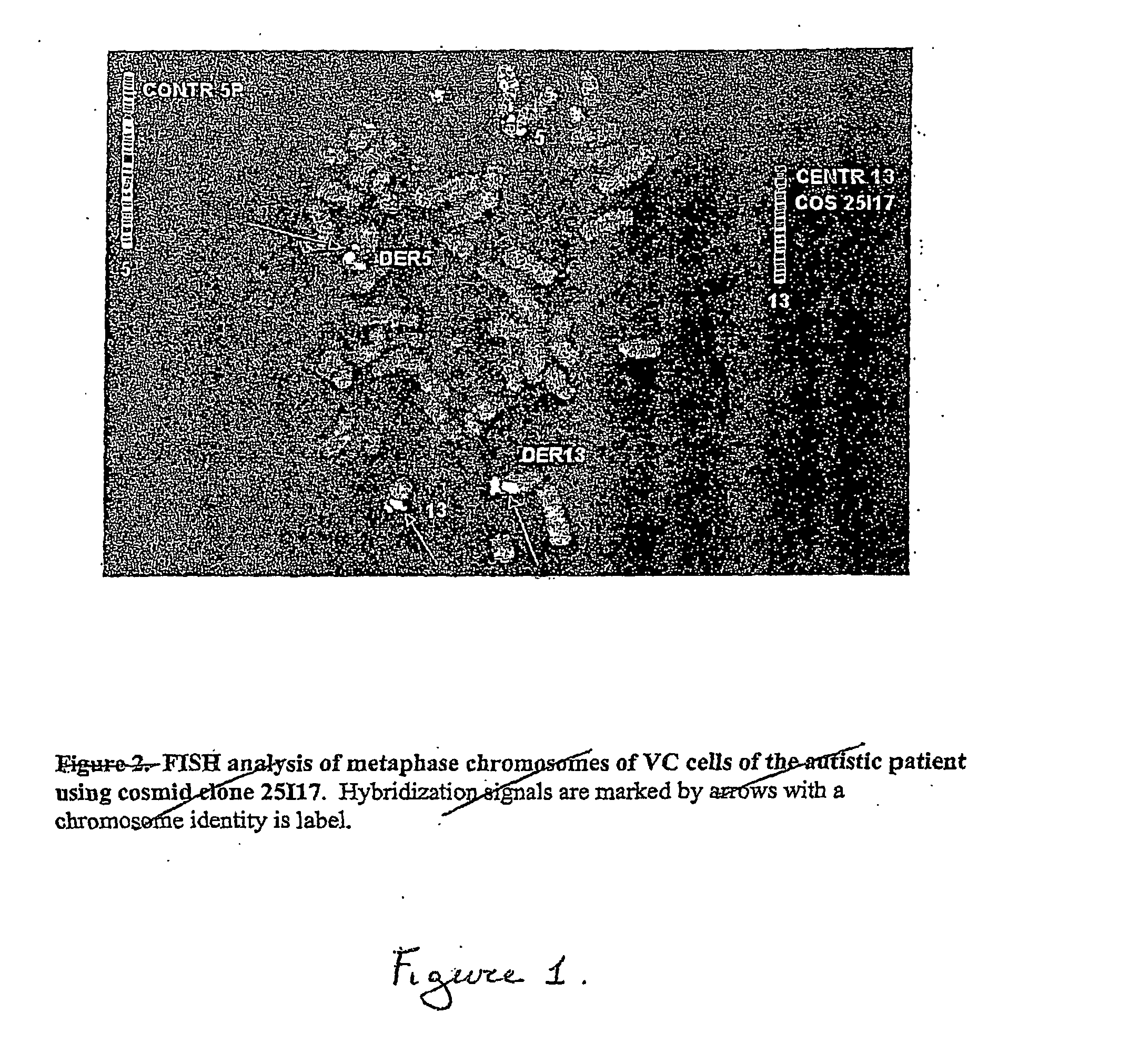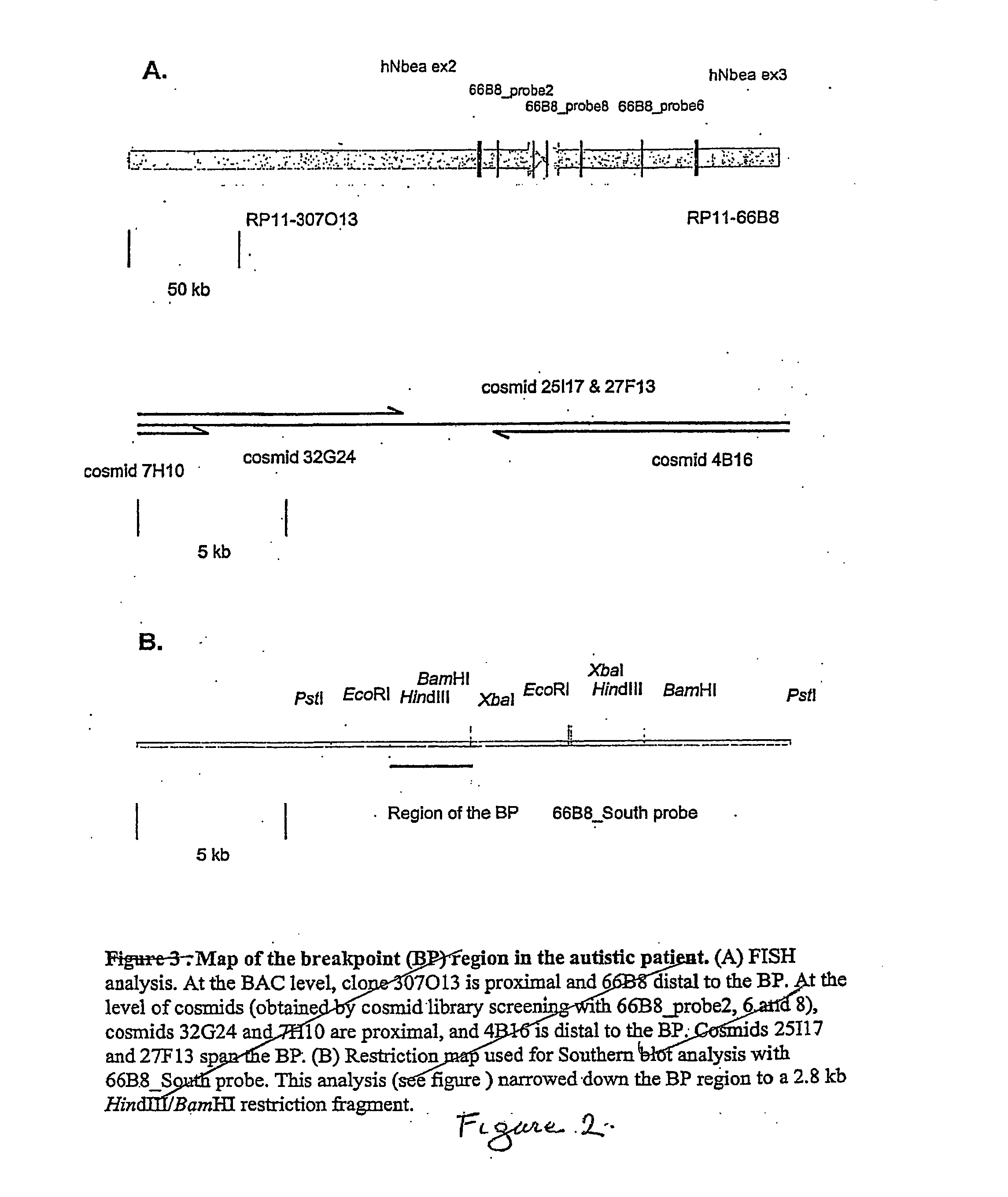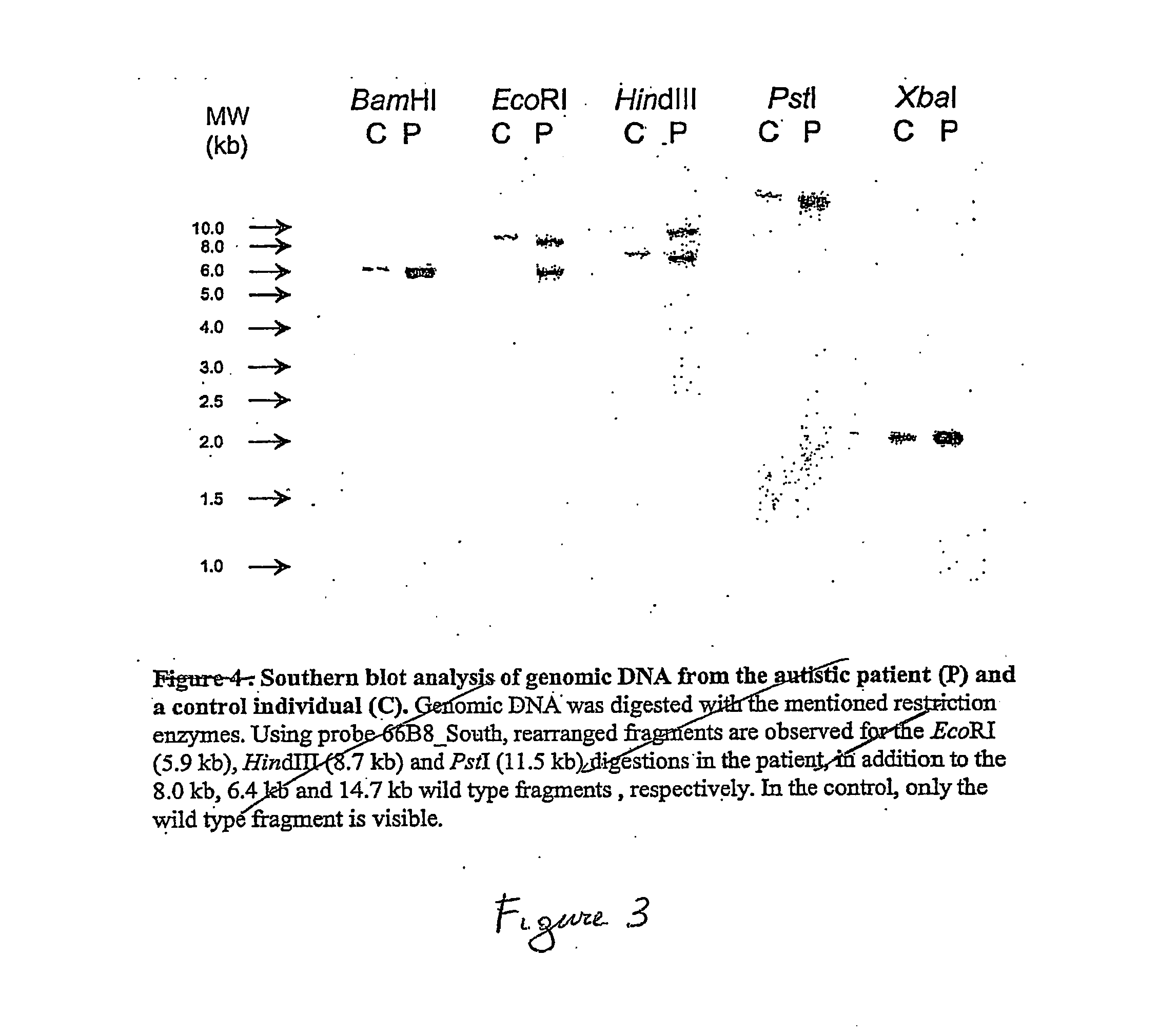Autism gene
a gene and autism technology, applied in the field of autism, can solve the problems of lack of single coherent theory explaining the pathogenesis of autism, inconvenient association studies with candidate genes, and major burden on families
- Summary
- Abstract
- Description
- Claims
- Application Information
AI Technical Summary
Benefits of technology
Problems solved by technology
Method used
Image
Examples
example 1
[0161] Disruption of the NBEA-Gene in a Patient with Autism
[0162] A detailed molecular genetic analysis of an autistic male, with a de novo balanced translocation t(5;13)(q13.3;q14.3) was completed. The patient has no severe mental retardation and none of his relatives exhibit symptoms of autism.
[0163] FISH analysis, by means of BACs hybridized against prometaphase chromosomes of the patient, was first used to delineate the rearrangement sites involved in the translocation event: clones RP11-307O13 (AL138690) and RP11-66B8 (AL161902) are proximal and distal to the breakpoint, respectively (data not shown). These clones overlap for 100 bp only and are part of the 10523-kb contig NT—009984, for which the complete DNA sequence is known (GenBank accession number GI: 22052081). Cosmids corresponding to probes located within these BACs were isolated by cosmid library screening and used for FISH analysis. 25I17 cosmid, fished with 66B8-probe8 (primers: 66B8_probe8S, 5′-CTGCCTGCTTCCCTGGAT...
example 2
[0166] Isolation of a Full Length NBEA cDNA
[0167] The full-length cDNA of the NBEA gene was cloned by RT-PCR. The sequence was assembled in a consensus transcript of 10812 nt in length, in full agreement with the published sequences. This sequence predicted a continuous open reading frame (ORF) of 8838 nt translated in a protein of 2946 aa. Moreover, a CpG island encompassing. 1456 bp of NBEA was identified (http: / / l25.itba. mi.cnr.it / genebin / wwwcpg.pl). A putative promoter was also found within this region using the Promoter Inspector program (http: / / genomatix.gsf.de / cgi-bin / ).
example 3
[0168] Preparation of Rabbit Antisera Reactive with NBEA Proteins from Mouse and Human
[0169] Standard protocol of rabbit immunization with peptides was used by Eurogentec to produce 3 antisera reactive with the human and the mouse native NBEA. The pure peptides were coupled to the Keyhole Limpet Hemocyanin carrier protein. The antisera are immunoreactive with NBEA epitopes not present on other human proteins. The antisera can immunoprecipitate NBEA proteins from solution as well as react with NBEA protein on Western blots of polyacrylamide gels. The antisera also react with the native endogenous NBEA when used for immunocytochemistry in cell-lines or in primary cultures of neurons as well as for immunohistochemistry on mouse sections. The sequences of the peptides used for the production of the 3 anti-NBEA antisera are:
anti-NBEA1:KVSDDILGNSDRPGSanti-NBEA2:IEDLSQSQSPESETDYanti-NBEA3:YPGCDAGIRAMDLSHD
PUM
| Property | Measurement | Unit |
|---|---|---|
| temperature | aaaaa | aaaaa |
| temperature | aaaaa | aaaaa |
| time | aaaaa | aaaaa |
Abstract
Description
Claims
Application Information
 Login to View More
Login to View More - R&D
- Intellectual Property
- Life Sciences
- Materials
- Tech Scout
- Unparalleled Data Quality
- Higher Quality Content
- 60% Fewer Hallucinations
Browse by: Latest US Patents, China's latest patents, Technical Efficacy Thesaurus, Application Domain, Technology Topic, Popular Technical Reports.
© 2025 PatSnap. All rights reserved.Legal|Privacy policy|Modern Slavery Act Transparency Statement|Sitemap|About US| Contact US: help@patsnap.com



